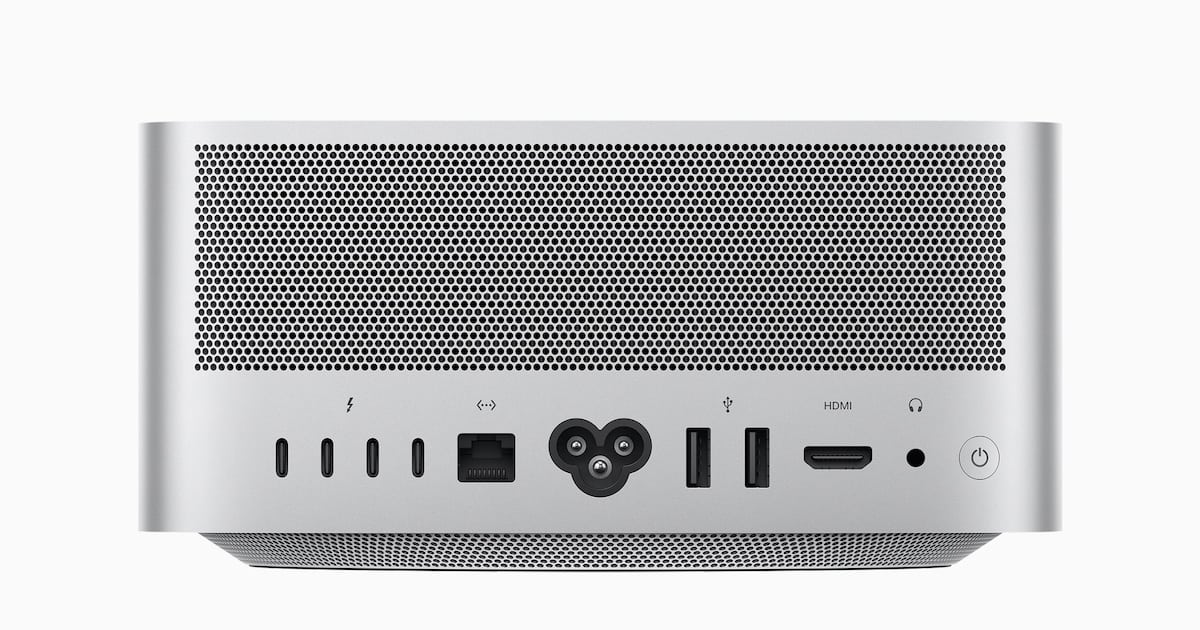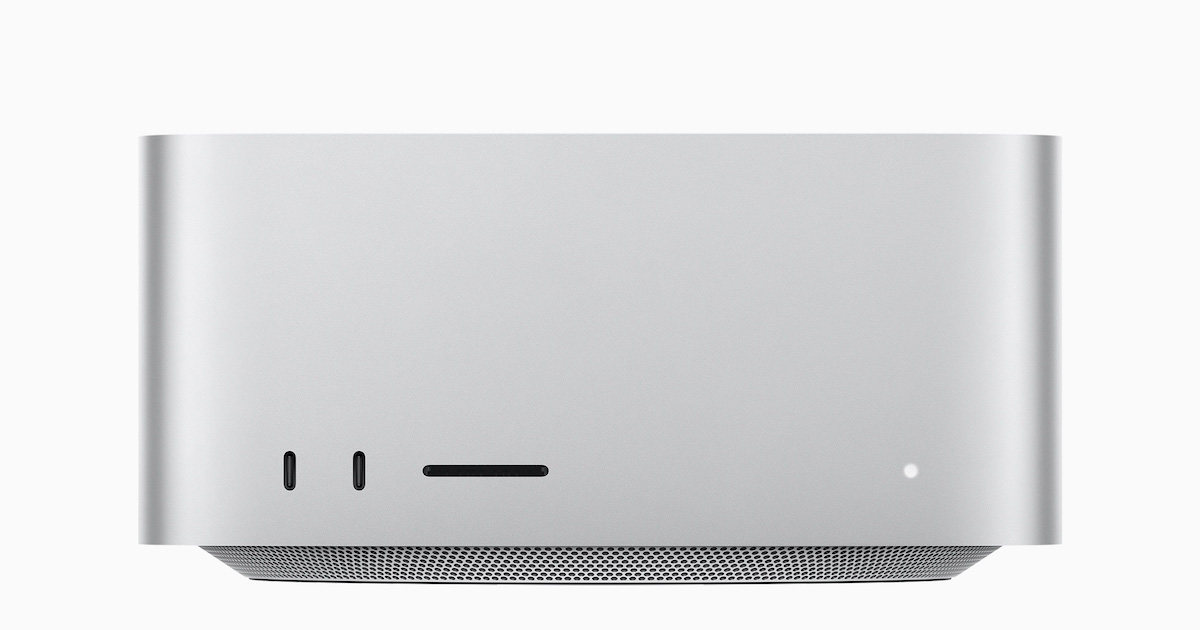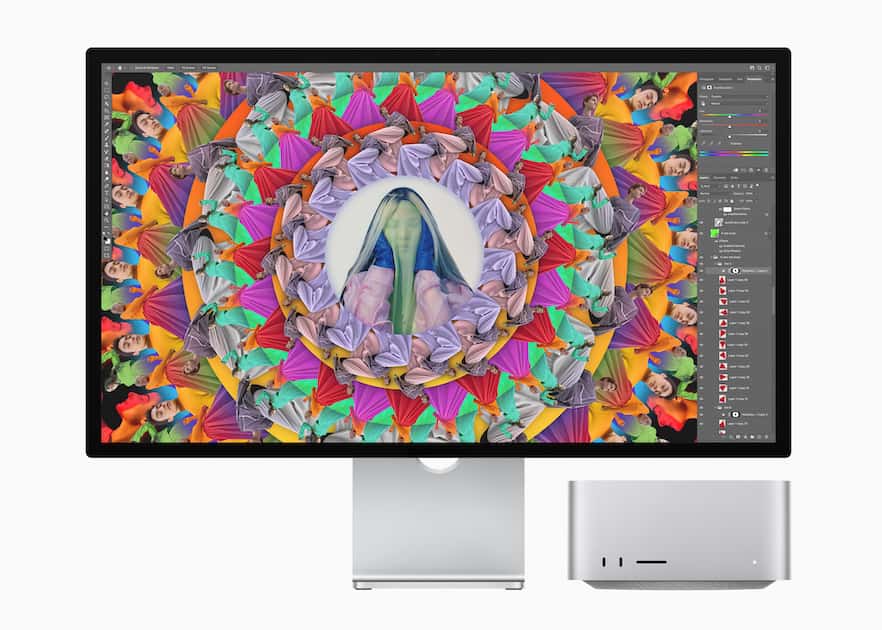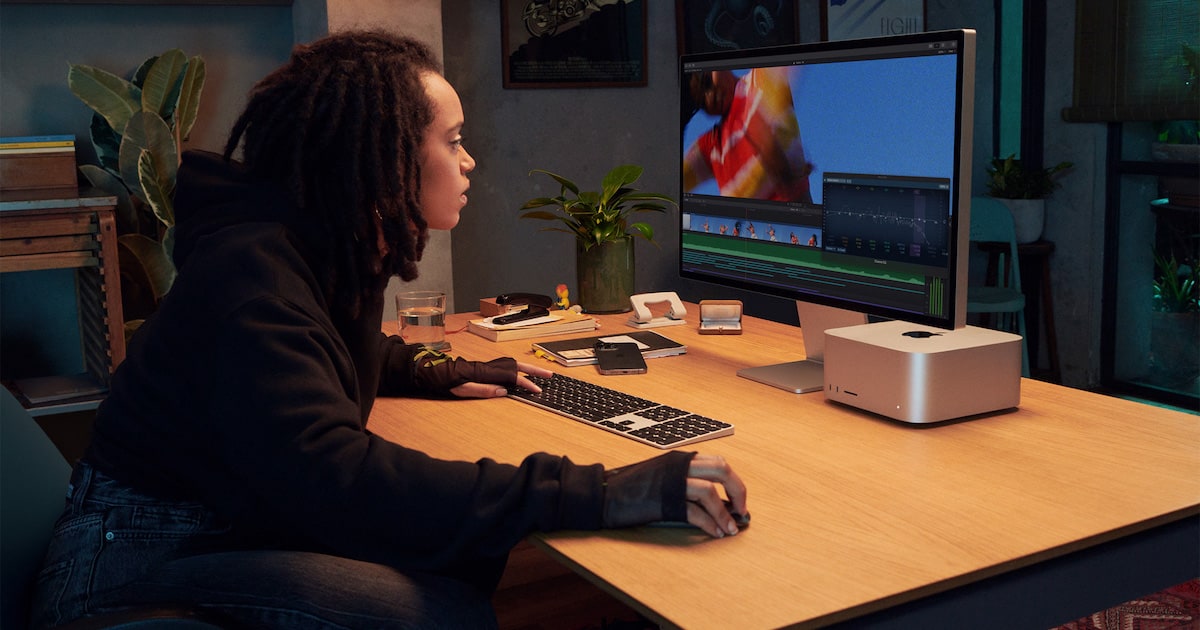During “Peek Performance,” Apple’s first media event of 2022, the Cupertino-based company announced “a breakthrough in personal computing”. Building on an undisclosed feature of the M1 Max chip design, Cupertino announced the M1 Ultra and a brand new Mac Studio desktop computer.
Doubling Up the M1 Chip Without Code Changes
Multiple processors in a computer are nothing new, but they usually require programming support to take full advantage of the performance. Thanks to a hidden feature of the M1 chip, though, Apple is able to connect two M1 Max processors together into the M1 Ultra.
Apple’s M1 chip has an interconnect bus, allowing for what’s called a chiplet design. The interconnect bus and technology called UltraFusion allows Cupertino to join together multiple processors on the same silicon. Thanks to the M1 design and macOS technologies, developers don’t need to change their code at all to take advantage of the interconnect.
The new M1 Ultra consists of 114 billion transistors, more than any other personal computer chip has ever had. It can use up to 128GB of unified memory. The Ultra offers a 20-core CPU (16 performance cores and 4 performance cores), 64-core GPU, and 32-core Neural Engine. Total memory bandwidth reaches blazing speeds of 800GB/s.
Johny Srouji, Apple’s senior vice president of Hardware Technology, called the M1 Ultra “another game-changer for Apple silicon that once again will shock the PC industry”.
By connecting two M1 Max die with our UltraFusion packaging architecture, we’re able to scale Apple silicon to unprecedented new heights. With its powerful CPU, massive GPU, incredible Neural Engine, ProRes hardware acceleration, and huge amount of unified memory, M1 Ultra completes the M1 family as the world’s most powerful and capable chip for a personal computer.
Introducing the Powerful Mac Studio
To take advantage of the new M1 Ultra, Apple introduced the Mac Studio. As previously speculated, the new desktop computer presents itself as a hybrid of the Mac mini and Mac Pro models.
The new computer is designed to optimize the performance of M1 Max and M1 Ultra, in a form factor about the same size as the diminutive Mac mini. It’s just taller. The computer’s square footprint is just 7.7 inches, and it stands 3.7 inches tall.
The square chassis is built from a single aluminum extrusion, and has an innovative thermal design that allows an extraordinary amount of performance without needing fans that sound like a 747 on takeoff.
The double-sided blowers bring cool air in through the bottom of the enclosure, channeling it across the internal components and out the back. More than 4,000 enclosures on the bottom and back of the Mac Studio guide the airflow.
Performance to Rival Every Other Apple Desktop
Even just using the M1 Max processor, Mac Studio outperforms all other Apple desktop computers, even the 16-core Xeon-powered Mac Pro. It offers users:
- Up to 2.5x faster CPU performance than the fastest 27-inch iMac with 10-core processor.
- As much as 50 percent faster CPU performance than Mac Pro with a 16-core Xeon processor.
- Up to 3.4x faster graphics performance than the 27-inch iMac, and over 3x faster than Mac Pro with its most popular graphics card.
- Up to 7.5x faster than the 27-inch iMac, and up to 3.7x faster than 16-core Mac Pro when transcoding video.
A Mac Studio powered by the M1 Ultra is even more powerful. The latest chip design enables:
- Up to 3.8x faster CPU performance than the fastest 27-inch iMac with 10-core processor.
- Up to 90 percent faster CPU performance than Mac Pro with 16-core Xeon processor.
- As much as 60 percent faster CPU performance than 28-core Mac Pro.
- Up to 4.5x faster graphics performance than the 27-inch iMac, and up to 80 percent faster than the fastest Mac graphics card available today.
- Up to 12x faster than the 27-inch iMac, and up to 5.6x faster than 28-core Mac Pro when transcoding video.
The Mac Studio with M1 Ultra is capable of playing back 18 streams of 8K. ProRes 422 video at a time, unheard of until now. The 128GB of unified memory allows the graphics processor more memory than any other desktop on the market. The internal SD, available with up to 8TB of storage, can deliver up to 7.4GB/s of performance.
Mac Studio Packs Plenty of Connectivity Options
Cupertino recognized that creative types need modularity in their desktop computers. That’s why the Mac Studio offers a great mix of ports. Inside, the computer supports Wi-Fi 6 and Bluetooth 5.0.

The rear of the computer provides:
- Four Thunderbolt 4 ports.
- Two USB-A ports.
- A 10Gb Ethernet ports.
- An HDMI port.
- A pro audio jack for high-impedance headphones or external amplified speakers.
The front of the Mac Studio offers more connectivity options.

Two front USB-C ports support 10Gb/s USB 3 with the M1 Max. For Mac Studio computers featuring the M1 Ultra, those ports also support 40Gb/s Thunderbolt 4. An SD card slot on the front allows photographers and videographers to easily import photos and video.

The Mac Studio offers extensive display support. You can plug in up to four Pro Display XDRs plus a 4K TV. It also fully supports the just-announced 5K Studio Display.
Pricing and Availability
The Mac Studio is available for order now, either through the Apple Store app or online at Apple’s website. The computers begin shipping soon, arriving to customers and select Apple Store locations beginning March 18, 2022.
Mac Studio starts at $1,999 for an M1 Max, or $3,999 with the new M1 Ultra.

Love the Studio. It’s a really fantastic piece of kit. Will I get one, well…no.
The thing is it’s way more powerful than I need. When I have to replace my 2016 iMac the Mini will be a huge bump in power that will do everything I want to do. I’d rather have a well equipped Mini with a really nice monitor and other workstation accoutrements, than a low end, bare bones Studio.
hell, if iPadOS keeps improving I may just keep using that and forgo the Mac.
I’m with you here, but I’m sure I can find a way to justify the cost. I’m going to wait until a teardown is published, though, so I can see if upgrading the SSD is a possibility. Paying the Apple Tax for more storage space is something I’ve always been loathe to do.
I want to see the teardown too. I want to know what’s inside the box. There’s been a lot of online speculation that it’s mostly full of fans and heatsink.
THE CUBE LIVES !!!!!!!!!!! ⏚
@cudaboy:
That is exactly what I said aloud when they unveiled it yesterday.
Resistance against this cube may, indeed, be futile.
Just a thought. If the Mac Studio starts with the M1 Max chip, I wonder if they might quietly put an M1 pro in the Mini case.
Will they? Very likely. Quietly? No way. They will shout this from the rooftops.
Still a possibility, but I think it more likely for the Mac mini to be released with the M2, instead. I would hope for an M1 Pro and M1 Max option, but I’m not sure.
I’m glad to see the return of ports on the front. The Curse of Jony Ive is being cast away at last! It is a pity that neither is USB A though, as that is how most flash drives are. Everyone is going to have a C to A adaptor permanently connected to the front of their Mac Studios. Oh well, it is certainly progress.
It looks like the entire top 2/3s of the device is the fan and power supply. It seems odd given how empty the Mac Mini case was with an M1 replacing Intel.
Yeah, that looks like a lot to me, too. But, we only see the profile, not inside the chassis. Can’t wait to see a teardown of this bad boy.